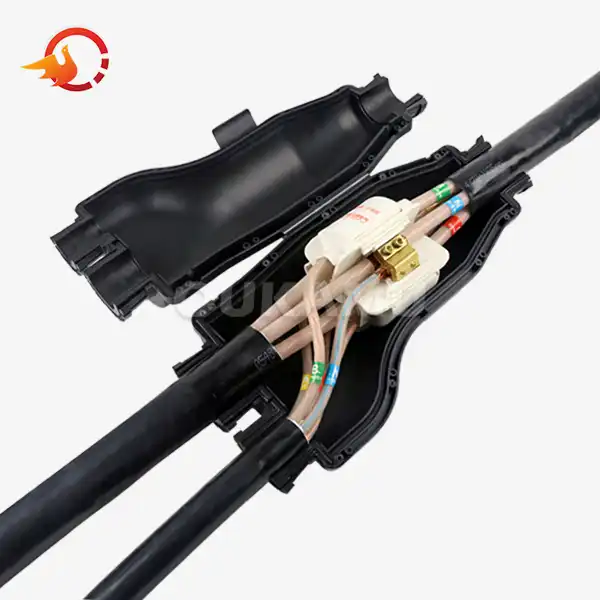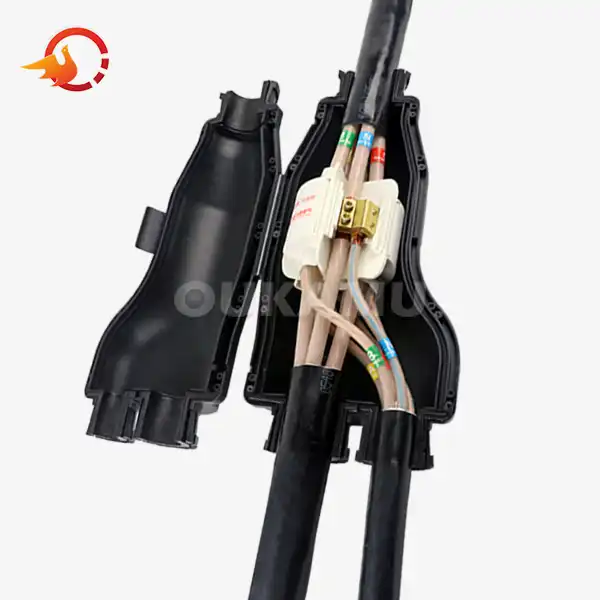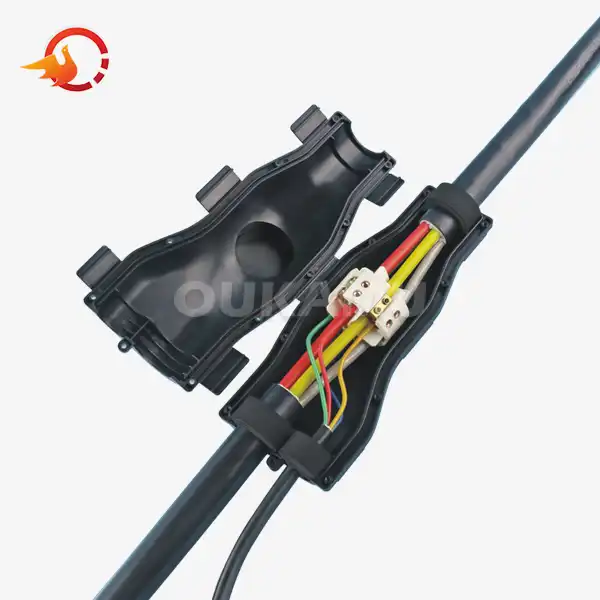Key Standards for Armoured Cable Joint Kits You Should Know
 2025-07-09 08:06:02
View:389
2025-07-09 08:06:02
View:389Armoured cable joint kits play a crucial role in ensuring the safety and reliability of electrical systems across various industries. These kits are designed to provide secure connections between armoured cables, offering protection against environmental factors and mechanical stresses. Understanding the key standards for armoured cable joint kits is essential for professionals in the electrical industry, as well as for those involved in construction and infrastructure projects. In this comprehensive guide, we'll explore the vital standards that govern these indispensable components.
Electrical Performance Standards for Armoured Cable Joint Kits
When it comes to armoured cable joint kits, electrical performance is paramount. These standards ensure that the joints can withstand the rigors of everyday use while maintaining optimal functionality. Let's delve into the key electrical performance standards that every professional should be aware of:
Voltage Rating and Insulation
The voltage rating of an armoured cable joint kit is a critical factor in determining its suitability for a specific application. Most kits are designed to handle voltages ranging from 0.6/1kV to higher ratings, depending on the intended use. The insulation materials used in these kits must meet stringent standards to prevent electrical leakage and ensure safe operation.
For instance, the IEC 60502 standard specifies the requirements for power cables with extruded insulation and their accessories for rated voltages from 1kV up to 30kV. This standard outlines the necessary insulation properties and testing procedures to guarantee the electrical integrity of the joint.
Current Carrying Capacity
The current carrying capacity of an armoured cable joint kit is another crucial aspect of its electrical performance. This capacity must be equal to or greater than that of the cable itself to prevent overheating and potential failure. Standards such as IEC 60287 provide guidelines for calculating the current-carrying capacity of cable systems, which can be applied to joint kits as well.
Dielectric Strength
Dielectric strength refers to the maximum electric field that an insulating material can withstand without breaking down. For armoured cable joint kits, this property is essential in preventing electrical arcing and ensuring long-term reliability. The IEEE 48 standard, which covers cable terminations and joints for power cable systems, specifies the dielectric withstand requirements for these components.
Mechanical and Environmental Protection Standards
Armoured cable joint kits are often exposed to harsh environmental conditions and mechanical stresses. As such, they must adhere to rigorous standards that ensure their durability and protection against various external factors. Let's examine the key standards related to mechanical and environmental protection:
Impact Resistance
Impact resistance is a crucial property for armoured cable joint kits, especially in industrial and outdoor applications. The IEC 62444 standard provides specifications for cable glands used in electrical installations, including requirements for impact resistance. This standard can be applied to the protective components of armoured cable joint kits to ensure they can withstand accidental impacts and maintain their integrity.
Water and Dust Ingress Protection
Protection against water and dust ingress is essential for maintaining the electrical performance and longevity of armoured cable joint kits. The International Protection (IP) rating system, as defined in IEC 60529, provides a standardized method for classifying the degree of protection provided by enclosures. For armoured cable joint kits, higher IP ratings indicate better protection against environmental factors.
Temperature Resistance
Armoured cable joint kits must be able to withstand a wide range of temperatures without compromising their performance. The IEC 60216 series of standards outlines the procedures for determining the thermal endurance properties of electrical insulating materials. These standards are crucial in ensuring that the materials used in armoured cable joint kits can maintain their properties under various temperature conditions.
UV Resistance
For outdoor applications, resistance to ultraviolet (UV) radiation is a critical factor in the longevity of armoured cable joint kits. The ASTM G154 standard provides guidelines for operating fluorescent ultraviolet lamps for exposure of nonmetallic materials. This standard can be used to assess the UV resistance of the outer protective layers of armoured cable joint kits.
Safety and Compliance Standards for Armoured Cable Joint Kits
Ensuring the safety of electrical installations is paramount, and armoured cable joint kits play a significant role in this aspect. Compliance with relevant safety standards is not only a legal requirement in many jurisdictions but also a crucial factor in preventing accidents and ensuring the reliability of electrical systems. Let's explore the key safety and compliance standards that apply to armoured cable joint kits:
Fire Resistance and Low Smoke Emission
In many applications, particularly in buildings and public spaces, fire resistance and low smoke emission are critical properties for armoured cable joint kits. The IEC 60332 series of standards specifies test methods for assessing the vertical flame spread characteristics of electric and optical fiber cables. Additionally, the IEC 61034 standard provides a method for measuring smoke density of cables burning under defined conditions.
These standards ensure that in the event of a fire, the armoured cable joint kits do not contribute significantly to the spread of flames or the production of toxic smoke, thereby enhancing the overall safety of the installation.
Halogen-Free and Low Toxicity
The use of halogen-free materials in armoured cable joint kits is becoming increasingly important, especially in enclosed spaces where the release of toxic gases during a fire can pose serious health risks. The IEC 62821 standard specifies requirements for halogen-free, low smoke thermoplastic insulated and sheathed cables for fixed installations.
Compliance with this standard ensures that the materials used in armoured cable joint kits do not release harmful halogenated compounds when exposed to high temperatures or fire.
Electromagnetic Compatibility (EMC)
In certain applications, particularly in industrial environments or near sensitive electronic equipment, electromagnetic compatibility is a crucial consideration for armoured cable joint kits. The IEC 61000 series of standards provides guidelines for EMC testing and compliance. Armoured cable joint kits that meet these standards help prevent electromagnetic interference and ensure the reliable operation of nearby electrical and electronic systems.
RoHS Compliance
The Restriction of Hazardous Substances (RoHS) directive, implemented in the European Union and adopted by many other countries, restricts the use of certain hazardous materials in electrical and electronic equipment. While primarily focused on electronic components, this directive can also apply to materials used in armoured cable joint kits.
Compliance with RoHS standards ensures that the kits do not contain restricted substances such as lead, mercury, or certain flame retardants above specified levels, contributing to environmental protection and human health.
Quality Management Systems
While not directly related to the product itself, the quality management systems employed by manufacturers of armoured cable joint kits are crucial in ensuring consistent compliance with relevant standards. The ISO 9001 standard provides a framework for quality management systems that can be applied to the manufacturing processes of these kits. Manufacturers that adhere to ISO 9001 demonstrate their commitment to producing high-quality products that consistently meet customer and regulatory requirements.
Conclusion
Understanding and adhering to the key standards for armoured cable joint kits is essential for ensuring the safety, reliability, and longevity of electrical installations. From electrical performance to mechanical protection and safety compliance, these standards cover a wide range of critical aspects that professionals must consider when selecting and installing armoured cable joint kits.
By choosing products that meet or exceed these standards, you can have confidence in the performance and safety of your electrical systems. Regular updates to these standards reflect advancements in technology and evolving safety requirements, making it crucial for professionals to stay informed about the latest developments in the field.
If you're looking for high-quality armoured cable joint kits that comply with the latest industry standards, don't hesitate to reach out to our team of experts. We're here to help you find the perfect solution for your specific needs. Contact us at info@okmbranchcable.com for personalized assistance and product recommendations.
References
1. International Electrotechnical Commission. (2019). IEC 60502: Power cables with extruded insulation and their accessories for rated voltages from 1 kV up to 30 kV.
2. Institute of Electrical and Electronics Engineers. (2020). IEEE 48: Standard for Test Procedures and Requirements for Alternating-Current Cable Terminations Used on Shielded Cables Having Laminated Insulation Rated 2.5 kV through 765 kV or Extruded Insulation Rated 2.5 kV through 500 kV.
3. International Electrotechnical Commission. (2018). IEC 62444: Cable glands for electrical installations.
4. ASTM International. (2016). ASTM G154: Standard Practice for Operating Fluorescent Ultraviolet (UV) Lamp Apparatus for Exposure of Nonmetallic Materials.
5. International Organization for Standardization. (2015). ISO 9001: Quality management systems - Requirements.















